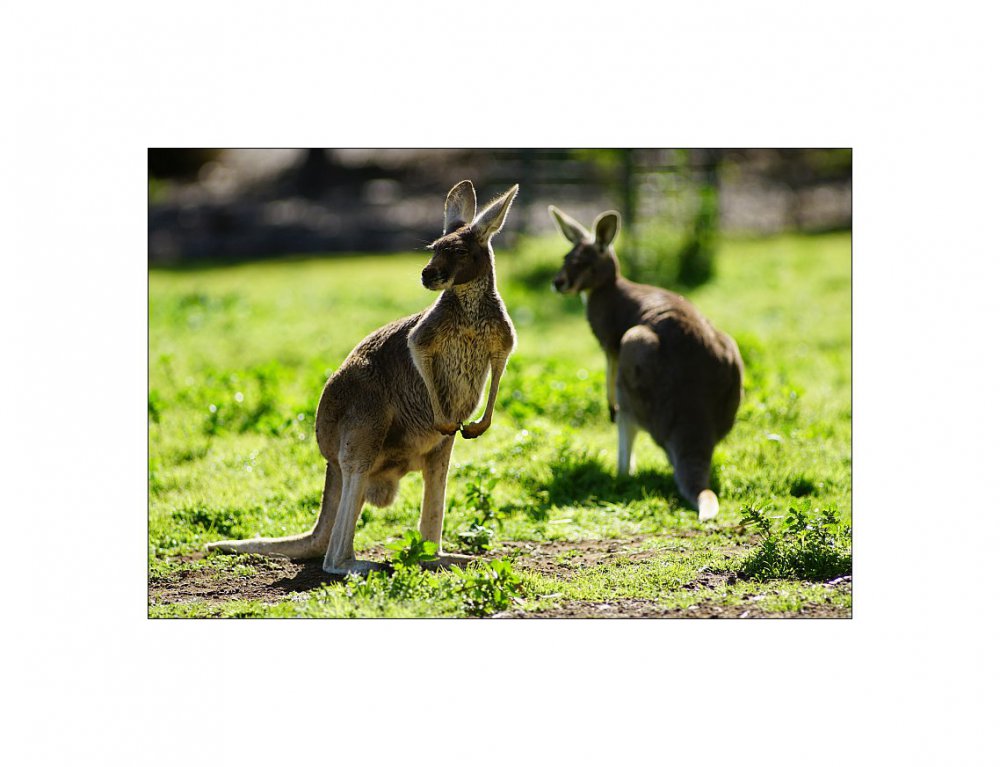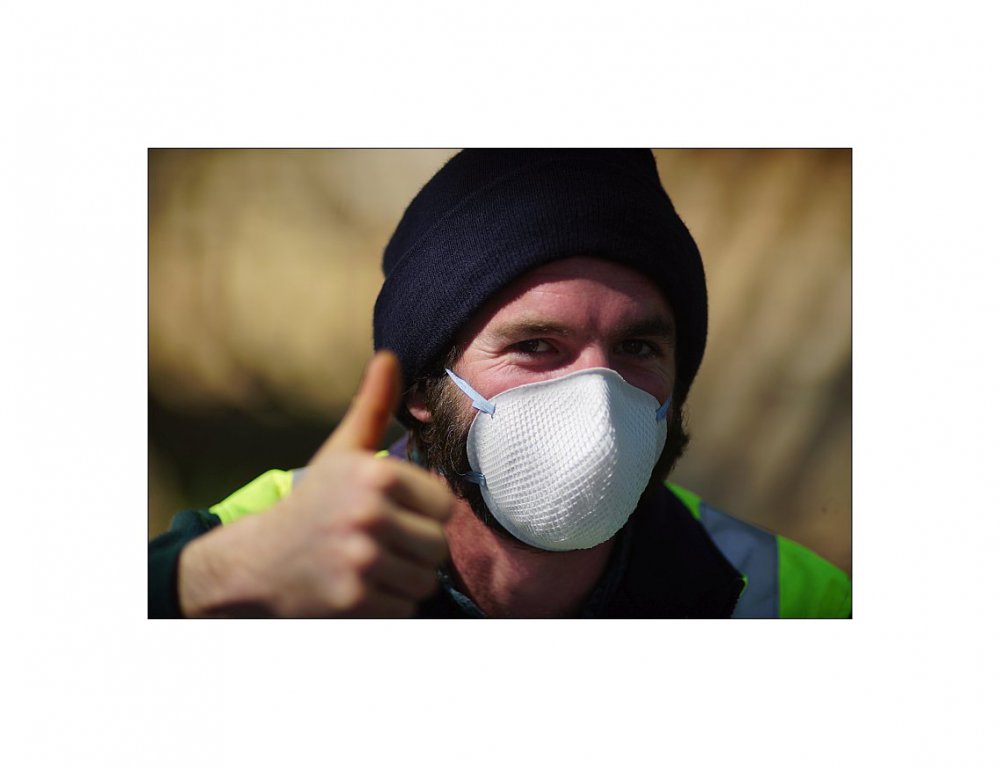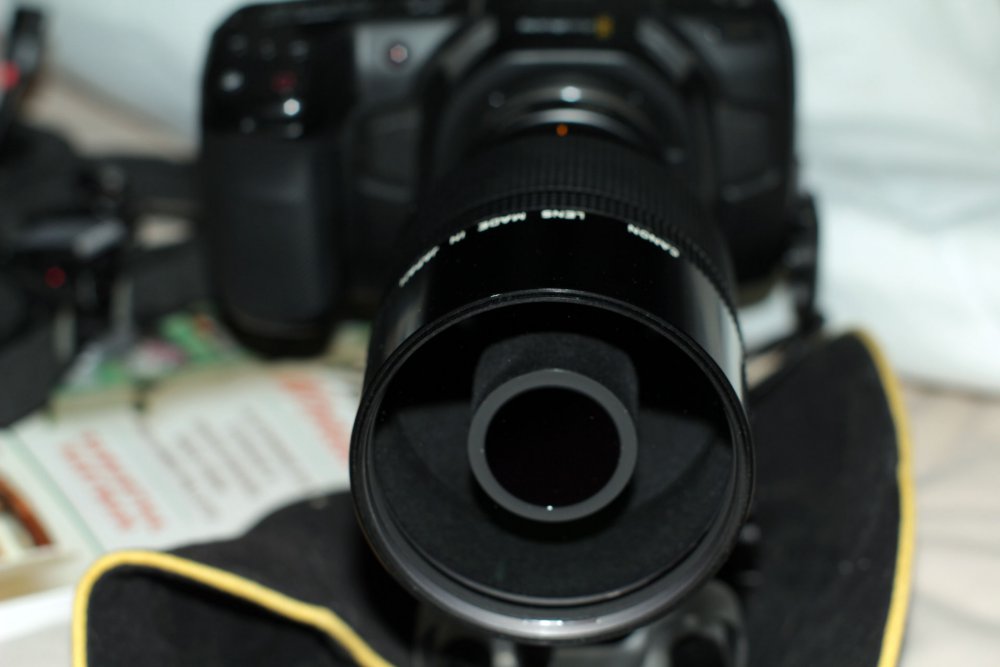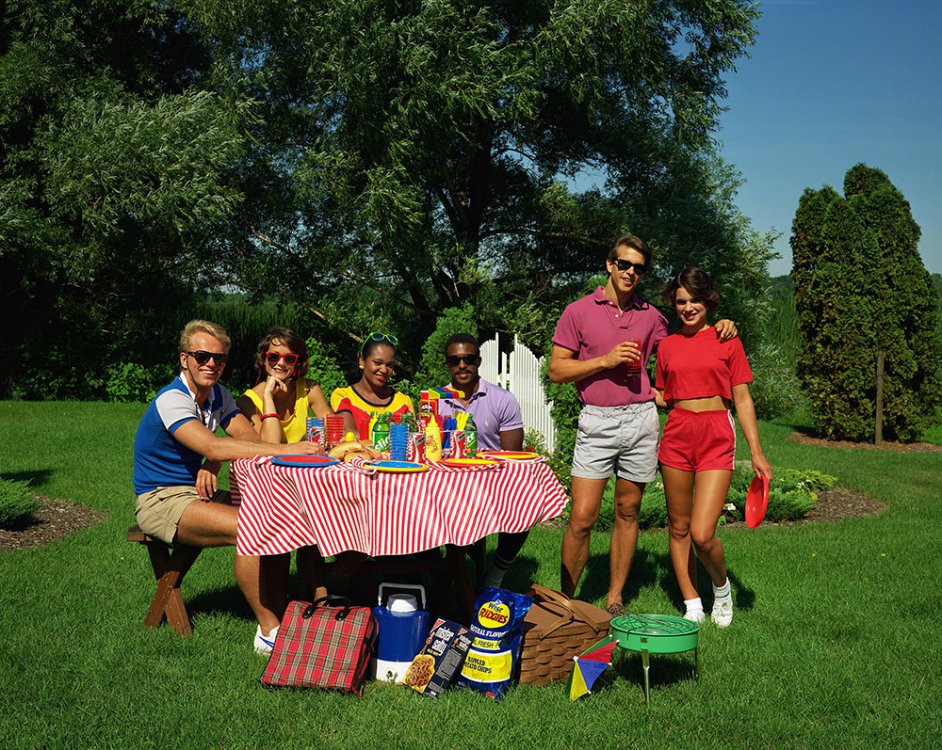Leaderboard
Popular Content
Showing content with the highest reputation on 10/09/2020 in all areas
-

What's today's digital version of the Éclair NRP 16mm Film Camera?
John Matthews and 2 others reacted to kye for a topic
A Canon DSLR with ML is probably an excellent comparison image wise. Canon / ML setups are similar to film in that they both likely have: poor DR aesthetically pleasing but high levels of ISO noise nice colours low resolution no compression artefacts I shot quite a bit of ML RAW with my Canon 700D and the image was nice and very organic.3 points -
Panasonic S5 User Experience
ntblowz and one other reacted to herein2020 for a topic
I tried that LUT, I didn't like it, I don't know why the manufacturers LUTS are usually not very good. Obviously it is all subjective, but I think the maker's LUTS are always based on perfect exposure and proper lighting. Any run and gun shooter knows that those conditions are rare to never so the 3rd party LUTs when done properly, look better to me. I think I have found the perfect VLOG to Rec.709 LUT for my uses. This is a free LUT from Ground Control. For me, the VLOG to Rec709 LUT is always the most important since it lays the foundation for the color grade and it is what's needed to match it to other cameras. After that, I make slight adjustments to exposure if needed for each clip, then overlay an adjustment clip with a creative grade over the whole project. Below is the link to the Ground Control LUT, I went back and tested it on my Street Video test project and it added a little more contrast without crushing the blacks so the clips look like they have more DR. It also didn't completely crush the lows like the Panasonic Varicam LUTS did (Nicest 709 LUT and Aggressive 709 LUT from Panasonic). The main thing I look for in a Rec.709 LUT is one that isn't too hard to expose for (the Leeming LUT for example always seemed so difficult to properly expose for with the GH5) and one that results in the best starting point for the color grade across a wide variety of scenes. Ground Control VLOG to Rec.709 Free LUT https://groundcontrolcolor.com/products/free-sony-v-log-to-rec-709-lut Here is an example of the 3 different LUTS with the exact same scene and no other changes. I was probably a little under exposed for this scene because I was trying to protect the sky....the GC LUT nicely kept the sky and brought up the lows.2 points -
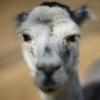
Long lenses, who uses them? Which do you like?
greenscreen reacted to noone for a topic
I love my ancient 300mm 2.8 Tamron adaptall. Not the best 300 2.8 made but probably the lightest (and there were NO bad 300 2.8s ever). Still over 2 kilos though! Even so, as I get older I have to seriously think about if I am going to take this lens anywhere (usually walking and usually will have it in a backpack). It is getting close to the time when I will have to give it away (to a relative) but maybe not for a year or three yet. I just might have to limit it to trips to the zoo and festivals now and for video, just outdoor music festivals on a tripod. My old Fuji superzoom will have to do when i want a long lens otherwise if not now, soon enough. I have had a few others over the years but this old Tamron 2.8 has been with me across systems for must be going on twenty years. I still have an old Tamron zoom to 350mm but none have been to my liking more than this old Tamron 2.8 IF I had the time and the room, this would be my first choice as a portrait lens most of the time too (though being MF, a lot of misses for every hit). I can not afford a newer better lens but this will do me fine for now (would love a 200 f2). I nearly got a Nikon 300 f2 many years ago, glad I didn't as that would be too heavy for me now (though might have made a tidy profit selling it). I have had several greyhound racing pics in a national (Australian) Greyhound racing paper and Australian football pics in a regional daily from it and even though i dropped it a few feet onto a hard ground that made it very hard to remove or replace the adaptall, still works fine for me. A couple of zoo shots from today (glad i took it instead of the Fuji superzoom). The Kangaroo shot was also with a bit of clearzoom for more "reach". What longer lenses are you using?1 point -
What's today's digital version of the Éclair NRP 16mm Film Camera?
John Matthews reacted to BrooklynDan for a topic
I shot documentaries on one in film school. It was a heavy, unwieldy beast. I preferred the Arri SR and especially the Aaton. Aaton was actually formed by ex-Eclair engineers, and you can see a rational progression from the NPR to the ACL and finally to the XTR. As far as a modern equivalent, it's obviously 2/3" shoulder-mounted broadcast ENG cameras, both in terms of sensor size, form factor, lens range, and intended purpose. There's really nothing in the modern landscape of Super 35 and full frame cameras that comes close in terms of shoulder-mounted operability. The Amira and original Alexa come close. Camera design has moved overwhelmingly towards compact, box-shaped cameras that are configurable. I think it's a shame and I hope that someday camera manufacturers return to the splendor and comfort of an ergonomic shoulder-mounted camera.1 point -
not sure how i missed this thread until now. However i'm quite literally throwing the "cat" amongst the pigeons. One canon fd 500mm mirror lens, found a mint one out of japan and couldn't help myself. For a good price as well nearly had to pinch myself. Main issue is my tripod isn't up to the task. Too much play sadly. Thats an issue i'll have to address shortly. This kinda fulfills some deep unconscious desire from a bygone era. Probably doesn't make a lot of sense an f8 mirror lens, but what the hell. I have set up a bird feeder out the front, the 500mm should bring them in a little closer 😀1 point
-
that definitely low light. Google low light photography find some images you like and emulate them. If you have a tripod, i'd use it. I've heard it said that experience isn't something you get until just after you need it. take lots of photos, develop a style, maybe even stack a few images see how that goes if your doing a lot of evening photos. i dont have that lens, no idea how it performs for photography or video . I guess all you can do is try it. Try it in every conceivable variation thats the only way to learn a lens and whether it can work for you or not. There's a multitude of lenses out there. Some lens have an almost cult like following, others have yet to be tried and not everyone makes a record of how it performs. as a video based forum a bunch of stills sometimes may not garner a lot of response. Magic lantern does amazing things for canons video abilities, not forgetting photos either. Not sure if its available for the 800d however and its definitely got a learning curve. but with a canon i'd lean towards ml for video work. By the way welcome to the forum.1 point
-
What's today's digital version of the Éclair NRP 16mm Film Camera?
John Matthews reacted to Anaconda_ for a topic
Like I said, it depends on how you class a digital equivalent. If you want the same final look, then yes, a s16 sensor or a good one. If you want a shoulder mounted doc camera that's ready to go, then that's another set of cameras. If you want a camera that's unlike any other before it, then you're in a different category again. I'm still unclear at to what the actual question is.1 point -

Compact vlogging lens options for a7s3 - 18mm Batis vs 16-35mm F4 vs something else?
dvcrn reacted to Amazeballs for a topic
18mm Samyang 2.8, 20mm Tamron 2.8 - both cheap and tiny.1 point -

What's today's digital version of the Éclair NRP 16mm Film Camera?
John Matthews reacted to tupp for a topic
The name of this S16 digital camera is the Ikonoskop A-cam dII. Of course the BMPCC and the BMMCC would also be comparable to the NPR. Well, since the NPR is a film camera, of course one had to be way more deliberate and prepared compared to today's digital cameras. If you had already loaded a film stock with the appropriate ISO and color temperature and if you had already taken your light meter readings and set your aperture, then you could start manually focusing and shooting. Like many 16mm and S16 cameras of it's size , the NPR could not shoot more than 10 minutes before you had to change magazines. One usually had to check the gate for hairs/debris before removing a magazine after a take. Processing and color timing and printing (or transferring) was a whole other ordeal much more involved and complex (and more expensive) than color grading digital images. On the other hand, the NPR did enable more "freedom" relative to its predecessors. The camera was "self-blimped" and could use a crystal-sync motor, so it was much more compact than other cameras that could be used when recording sound. Also, it used coaxial magazines instead of displacement magazines, so it's center of gravity never changed, and with the magazines mounted in the rear of the camera body, it made for better balance on one's shoulder than previous cameras. The magazines could also be changed instantly, with no threading through the camera body. In the video that you linked, that quick NPR turret switching trick was impressive, and it never occurred to me, as I was shooting narrative films with the NPR, mostly using a zoom on the turret's Cameflex mount. The NPRs film shutter/advancing movement was fairly solid for such a small camera, as well. In regards to the image coming out of a film camera, a lot depends on the film stock used, but look from a medium fast color negative 16mm stock is probably comparable to 2K raw on current cameras that can shoot a S16 crop (with S16 lenses). By the way, film doesn't really have a rolling shutter problem. It is important to use a digital camera that has a S16 (or standard 16) crop to approximate the image of the NPR, because the S16 optics are important to the look. The EOSM is a bit more "grab and go" than an Eclair NPR.1 point -
Sony A7S III
Hangs4Fun reacted to Llaasseerr for a topic
Right, Resolve doesn't support ProRes RAW. Neither does Nuke. Forgot to bring that up, they expect an intermediate transcode. While I'm testing this out, I'm personally using Scratch to trancode to either slog3/sgamut3 or to ACES OpenEXR. Apparently Adobe have added the ability to immediately convert to SLog3/Sgamut3 on import of a ProRes RAW file in a recent beta of Premiere, so you will then be good to go and have the same image as your Ninja V: https://community.adobe.com/t5/premiere-pro-beta/discuss-prores-raw-raw-to-log-conversion-support/m-p/11413274?page=1#M8501 point -
What's today's digital version of the Éclair NRP 16mm Film Camera?
BenEricson reacted to seanzzxx for a topic
There is no Ursa with a dual gain sensor by the way. Also all the people here touting the ML M50 as anything other than an interesting technical achievement (comparing it to an incredible workhorse camera) I just cannot comprehend. If anything I'd say the FS7 is the modem equivalent: super well priced for the time and an all around workhorse camera that is EVERYWHERE (and to be clear, I don't really like the image it produces, I'm just commenting on its position in the field right now).1 point -
I think it depends what you mean by digital equivalent. Ease of use? Price? Ergonomics? Image quality? -- As far as a point and shoot doc camera, I'd say the Ursa Mini Pro g2 is pretty close. With Braw you really can fix everything in post - apart from focus. File sizes are reasonable and you have good audio inputs and with dual ISO, even lighting isn't an issue, other than for artistic effect. Next I'd say FS5/7 and Canon's Cx00 range depending on specific needs. Or if you have the budget, go for Red. Eosm is nice, but not grab and go, plenty of room for error, although the footage will probably have a closer feel.1 point
-

What's today's digital version of the Éclair NRP 16mm Film Camera?
tupp reacted to John Matthews for a topic
Would I be wrong in saying there was a carefree nature of this camera, meaning you didn't have to think so much about setup, just find a moment and start shooting. Question: would you consider the modern-day version a camera with raw (big files) or 8 bit?1 point -

Image thickness / density - help me figure out what it is
deezid reacted to hyalinejim for a topic
1 point -
Sigma FP flip screen mod
meudig reacted to power cheung for a topic
Hi, everybody. I'm the author of this modification. It is currently only available in China, and will be released in November with a self-assembly kit that you can install yourself. The installation isn't complicated. You just take off the screen and don't have to take the device apart. The whole process takes about 20 minutes. No parts are damaged and can be restored to factory state. For $249, it's available through paypal for two to three weeks of shipping and $30 to $40. I would declare a lower value of the item to reduce the tax. Contact me at power_cheung@139.com1 point


